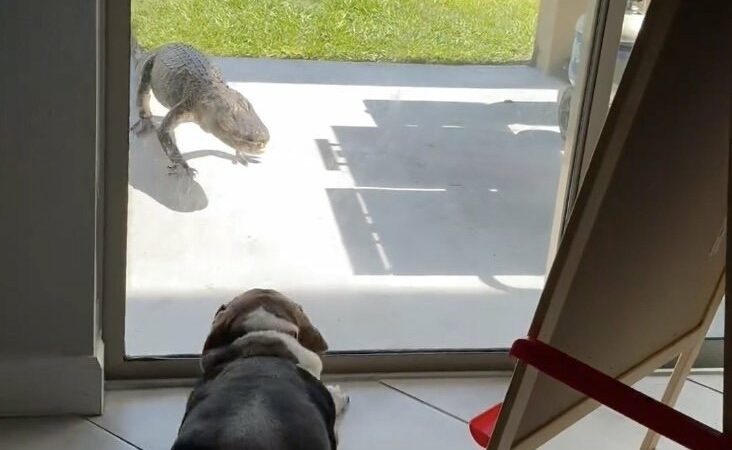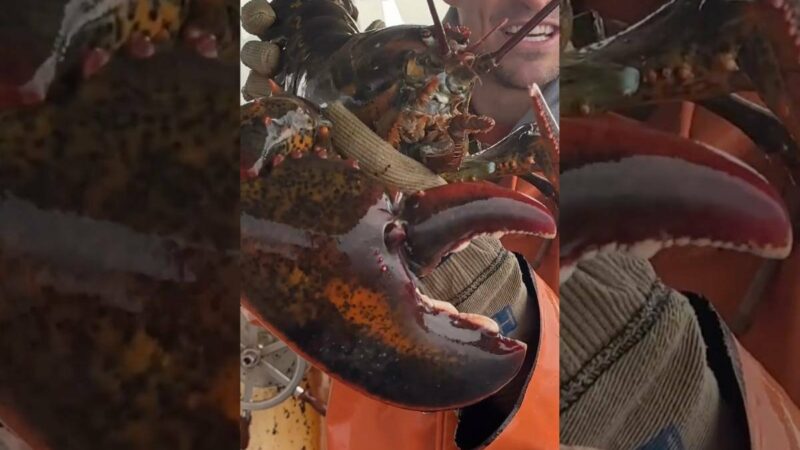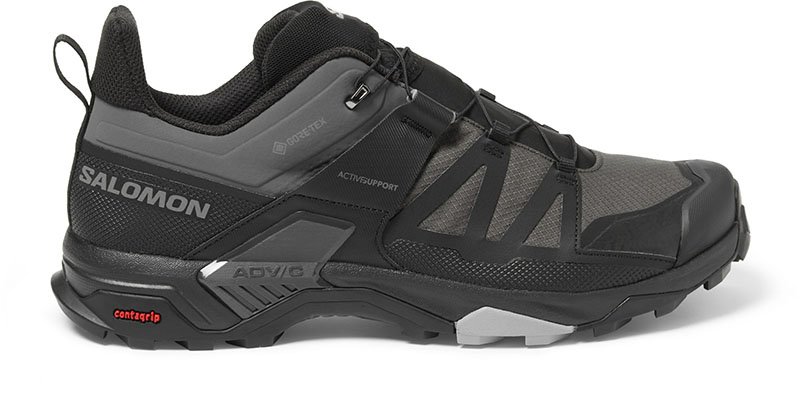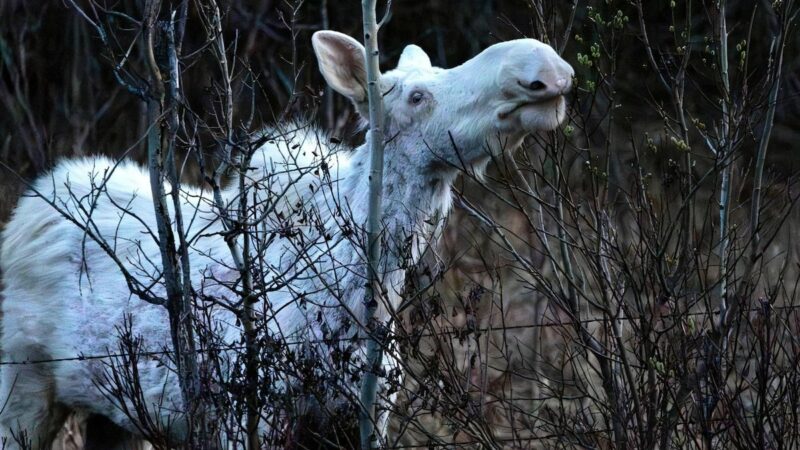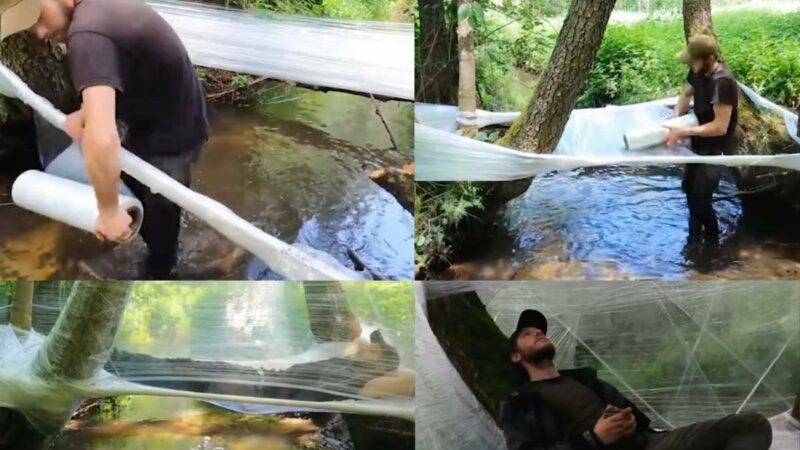Running Wild Recap: Russell Brand Learns Rugged Scotland Is No Joke
Comedian Russell Brand realizes surviving in the wilderness is no laughing matter on this week’s Running Wild with Bear Grylls: The Challenge (Sundays on National Geographic at 9/8c).
The Englishman meets up with legendary survivalist Bear Grylls on the secluded Hebrides Islands, a chain off the northwest coast of Scotland. Russell spends his first day learning essential outdoors skills while navigating the grueling terrain in search of food, supplies, and, finally, 400-year-old castle ruins where he and Bear shelter for the night. The following day, Russell is forced to use his new survival skills to earn his extraction from this rugged area—without any help.
“I’m embracing the moment, I’m embracing the unknown,” Russell says. “I’m interested in seeing what will happen to me when I’m in an environment I don’t understand.”
“Russell, you better be ready!” Bear warns.
Day One: Cliffs, Bogs, and Kilts
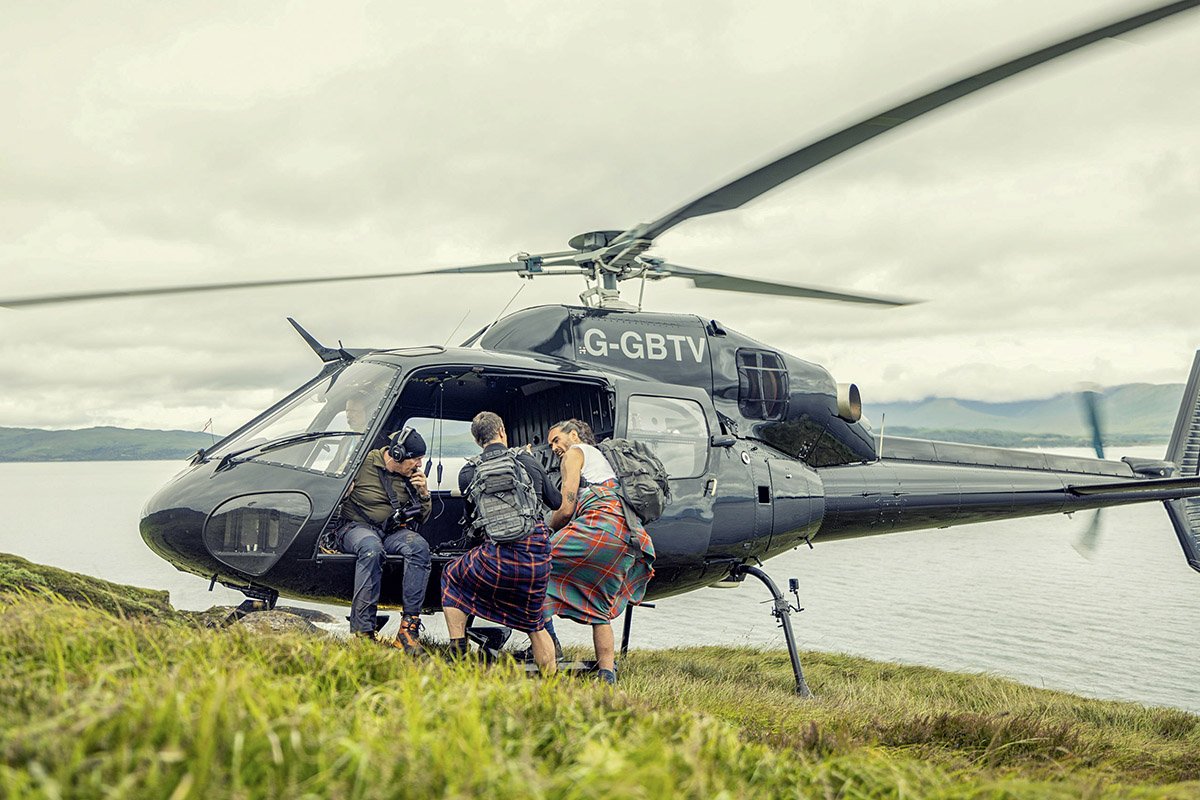
Bear arrives to pick up a row-boating Russell in a seaplane, and the two fly together to the Hebrides Islands. Upon arrival, they jump from the moving plane into the cold water, using their backpacks as flotation devices to make their way safely to shore.
In true Scottish style, Bear and Russell change into traditional kilts—underwear optional. Bear explains to Russell that they’ll be doing an 8-mile trek of the bog-covered islands.
Almost immediately, Bear decides to find Russell something to eat. Since the star’s a vegan, they take advantage of the coast’s bountiful sea lettuce. “I’ve seen the menu for tonight’s meal,” Russell says. “It’s just sludge. Green sludge.”
Bear then begins heading inland with Russell, and they immediately come to their first obstacle: a craggy cliff they’ll have to ascend. “This is a great place to teach Russell his first skill,” Bear notes of the actor who’s afraid of heights. “This is his training ground.”
Bear has already anchored ropes to the sea cliff so he can show Russell how to do a jumar ascent, a climbing technique that utilizes a handle ascension device attached to a rope. Russell then makes his way up while his kilt flaps in the wind. “Luckily, it’s a deserted island is all I can say,” Bear jokes.
At the top, Russell notes that jumar-ing a cliff takes “more mental acuity than just rigor.” And, he adds, there’s “absolutely no thinking about what’s going on below, and I don’t just mean what’s under my kilt.”
The hike begins, and Bear tells Russell that sheep’s wool snagged in the brush is flammable and can be useful for lighting a fire later at their castle-ruins campsite. They continue a path that leads them to a 120-foot cliff they’ll need to descend so they can reach a volcanic mountain that’s in the distance.
Bear has rope, but there’s nowhere secure to attach it to—until he pulls an ax from Russell’s backpack. “When it comes to climbing and rappelling, your anchor is everything,” Bear says before driving the ax into the ground and using the blade for what Bear insists is a “pretty solid” anchor. He explains the rope will put downward pressure on the ax blade and force it deeper into the ground (though he warns the move is “risky” and advises amateurs not to try it at home).
After receiving a short explanation on how to lower down, a visibly nervous Russell puts on a harness and goes over the edge first while Bear gives instructions from above. “I just rappelled my way down that mountain,” Russell says after his successful descent. He admits his fear of heights kicked in after going over the edge and he experienced a “profound deep feeling of vertiginous dread.”
Bear next teaches Russell how to measure his pace count using two 50-meter lengths of rope. He tells Russell to lay the ropes out and measure how many steps he needs to take to walk its 100-meter length. He then tells Russell to track his distances walked by using sheep poo they easily find in the meadows in the area as a rudimentary abacus. After each set of steps—in Russell’s case, 60 paces equals 100 meters—he should transfer one of 10 droppings to the other hand. Once he’s transferred all the droppings, he’ll know he’s gone 600 paces, which is 1,000 meters or roughly 1 kilometer.
“Knowing your pace count and repeating the process allows you to travel measured distances without over- or undershooting your destination,” Bear says.
The pair push on and reach the remote island castle, last occupied in the 1600s, as the weather begins to take a turn for the worse. They start a fire with the sheep wool they gathered earlier, and Russell shares with Bear how he battled and overcame his addiction issues. The two then feast on what Russell rates a two-star seaweed meal, and they turn in for the night.
Day Two: Conquering Heights and Fear
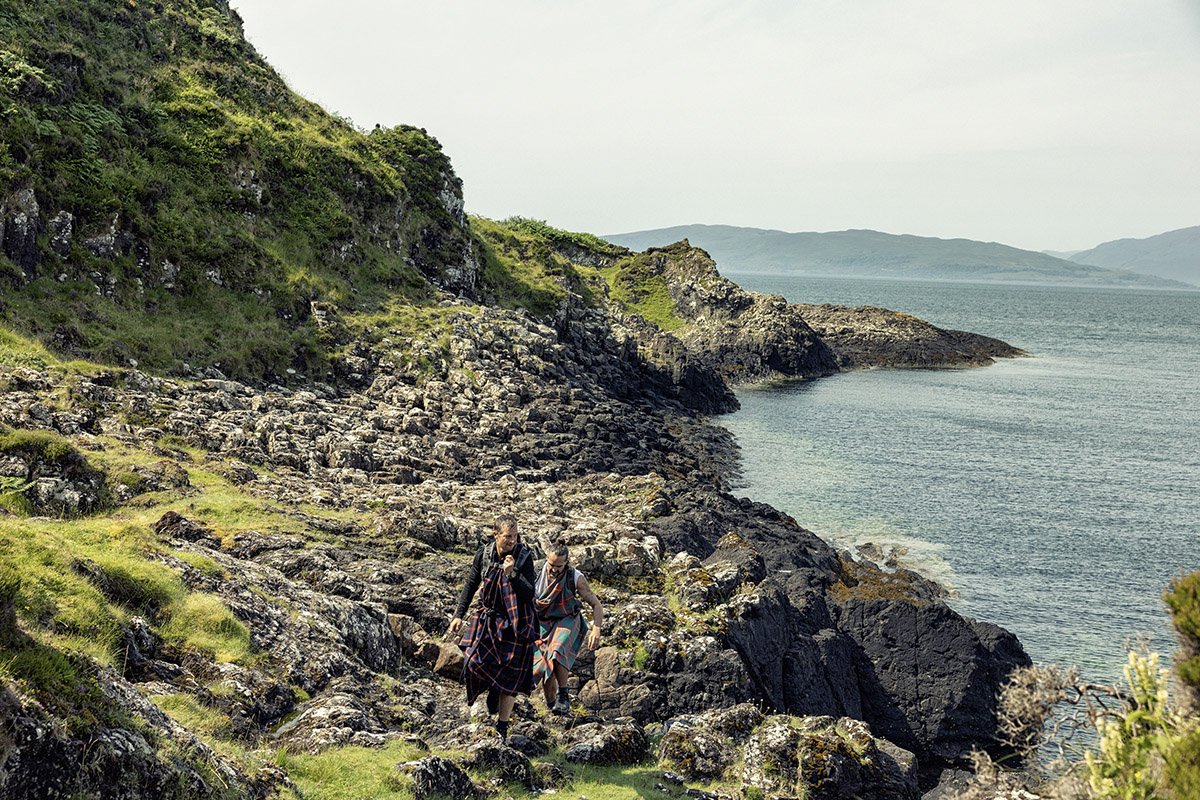
In the morning, Bear has gone on ahead and left Russell to recall by himself how to use his pace-counting technique to follow the coastline for 820 meters. His task: locate a smuggler’s hole in the ground, light a fire, and use a makeshift torch to find a cache containing items useful for the last part of his journey. If Russell succeeds, he’ll have earned his extraction.
“It’s definitely a different dynamic when you’re on your own and you’re doing this stuff without anyone to guide you,” Bear explains.
Russell, however, is up for the challenge, and he begins walking the shoreline and keeping track of his paces with sheep poo.
At the base of a cliff, Russell finds the smuggler’s hole in the rocks. He crafts and lights a wool torch, squeezes into the opening backwards and descends into the cave’s depths. There, he retrieves his bounty, a bag containing an ascension handle and jumar equipment, indicating his final challenge will include scaling a cliff.
Another 400 meters forward, Russell reaches the sheer obstacle and spots Bear waiting for him at the top. The comedian prepares his equipment and begins to slowly pull and push himself up with the ascension handle. Though the handle gets stuck when Russell is nearly up the cliff, he manages to get free and complete the climb.
“It was a little bit scary. I didn’t feel like I had any control,” Russell says. “Fear can feel like an obstacle.”
“Yeah,” Bear agrees, adding, “but actually it’s a training ground.”
Source: https://outdoors.com/running-wild-the-challenge-russell-brand/


